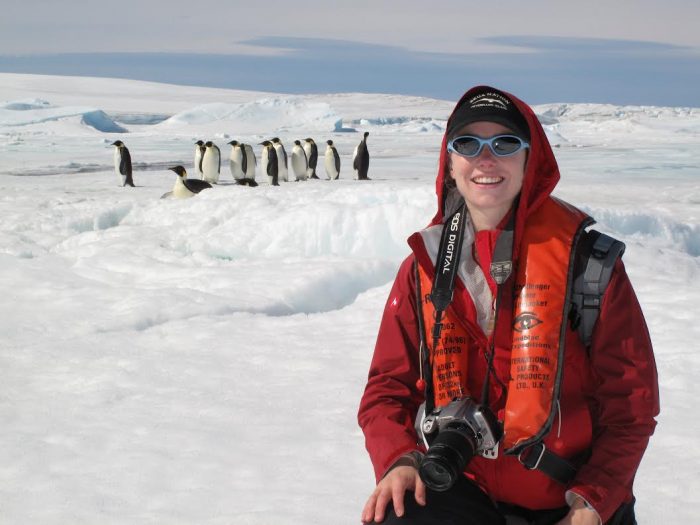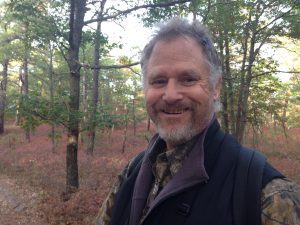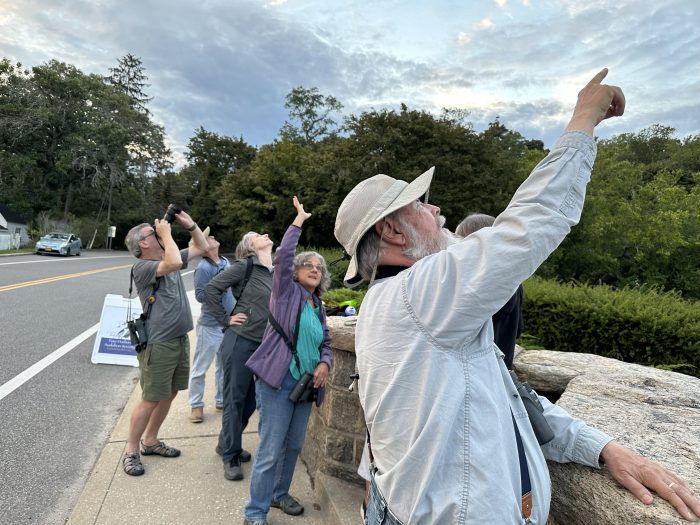By Daniel Dunaief
Even as Covid threatened the health of people around the world, a group of 30 leading researchers from a wide range of fields and countries were exchanging ideas and actions to ensure the sustainability of ocean fisheries.
Starting in 2020, the researchers, including Stony Brook University’s Endowed Professor of Ocean Conservation Science Ellen Pikitch, spent considerable time developing operating principles to protect the oceans and specific actions that could do more than ensure the survival of any one particular species.
Earlier this week, the researchers, who come from fields ranging from biology and oceanography to social sciences and economics, published a paper titled “Rethinking sustainability of marine fisheries for a fast-changing planet” in the Nature Journal npj Ocean Sustainability, as well as a companion 11 golden rules for social-ecological fisheries.
The researchers, who were led by first author Callum Roberts, Professor of Marine Conservation at the University of Exeter, plan to share their framework with policy makers and government officials at a range of gatherings, starting with Brussel’s Ocean Week and including the United Nations Ocean Conference in Nice.
“We felt something like this was needed in order to reach these audiences effectively,” said Pikitch.
The extensive work, which included two series of workshops, outlines ways to regenerate the ocean’s health and to put people before profits.
The authors suggest that fisheries need to address their contributions to the climate crisis through activities that are polluting, such as dumping fishing gear or plastics in the ocean, carbon intensive or destructive, through the disturbance of sediment carbon stores.
The paper suggests that lost or discarded fishing gear often make up the largest category of plastic waste in the open sea. This gear is not only polluting, but leads to ghost fishing, in which fish die in abandoned or discarded nets.
The authors suggest that labelling fishing gear could encourage better stewardship of the ocean. They also argued that fisheries management has historically focused on economic output, without considering social value and effects.
“We take the view that marine life is a public asset, and its exploitation and management should work for the benefit of local communities and the public,” the authors wrote in their paper.
Pikitch described the work as an “urgent” call to action and added that the researchers will be “meeting with policy makers, retailers, fishery managers and others to discuss these results and how they can be implemented.”
The researchers engaged in this effort to find a way to compile a collection of best practices that could replace a hodgepodge of approaches that overlook important elements of sustainability and that threaten fish species as well as ocean habitats.
“Fisheries are in bad shape worldwide and are degrading rapidly with overexploitation and climate change,” Philippe Cury, Senior Emeritus Researcher at the Institute of Research for Development in Marseille, France, said in a statement. “Efficient and renewed fisheries management can really help to restore marine ecosystems and to reconcile exploitation and biodiversity.”
Pikitch anticipated that some might offer pushback to the suggestions. “If you don’t get pushback, you’re probably not saying something that is important enough,’ she said.
Ecosystem focus
Using research Pikitch led in 2004 from a paper in Science, the group constructed one of the 11 actions around developing a holistic approach to the ocean habitat.
Pikitch’s expertise is in ecosystem based fishery management.
“Fish interact with one another, feed on one another, compete with one another and share the same habitats,” Pikitch said. “For those reasons alone and more, we need to stop managing species one at a time.”
Some policies currently protect ecosystems, including the spatial and temporal management of the Canadian lobster fishery to protect whales and the no-take marine reserves to protect artisanal reef fisheries in the Caribbean.
Still, these approaches need to be applied in other contexts as well.
While some people believed that researchers didn’t know enough to create and implement holistic guidelines, Pikitch and her colleagues suggested that it’s not “necessary to know everything if we use the precautionary principle.”
Pikitch suggested that the Food and Drug Administration takes a similar approach to approving new medicines.
The FDA requires that researchers and pharmaceutical companies demonstrate that a drug is safe and effective before putting it on the market.
Fisheries are making some headway in this regard, but “much more is needed,” she said.
Subsidy problem
The authors highlighted how government subsidies are problematic.
“Many fisheries are highly carbon intensive, burning large quantities of fossil fuels often made cheaper by capacity-enhancing government subsidies,” the authors noted in the paper. “Among the worst performers in terms of fuel burned per tonne of landing gears are crustacean fisheries, fisheries that operate in distant waters, deploy heavy mobile gears like trawls, or target high value, low yield species like swordfish; most of them propped up by subsidies.”
When overfishing occurs, companies switch to catching less exploited species, even when they don’t have any data about new catches. The new species, however, soon become overfished, the authors argued.
In urging fisheries management to support and enhance the health, well-being and resilience of people and communities, the scientists add that abundant evidence of widespread human rights abuses occurs in fishing, including coercive practice, bonded, slave and child labor and unsafe, indecent and unsanitary living and working conditions.
“Abuses at sea continue and more needs to be done to stop this,” Pikitch explained.
Additionally, the authors hope to give a voice to the global south, which is “often ignored in many of these discussions about how to appropriately manage these fisheries,” she suggested.
A beginning
While the paper was published, Pikitch explained that she sees this as the beginning of change and improvement in creating sustainable fisheries policies. She anticipates that the collection of talented scientists will continue the work of protecting a critical resource for human and planetary survival.
“This group will continue to work together to try get this work implemented,” she said. “I’m enormously proud of the result.”











 Welcome to the 33rd edition of Paw Prints, a monthly column for animal lovers dedicated to helping shelter pets find their furever home.
Welcome to the 33rd edition of Paw Prints, a monthly column for animal lovers dedicated to helping shelter pets find their furever home.





 Did you know? For the month of September, the Town of Brookhaven Animal Shelter, 300 Horseblock Road, Brookhaven offers a “Teacher’s Pet” special promotion — All animals that are ” School Age” (4 years old and up) are free. 631-451-695
Did you know? For the month of September, the Town of Brookhaven Animal Shelter, 300 Horseblock Road, Brookhaven offers a “Teacher’s Pet” special promotion — All animals that are ” School Age” (4 years old and up) are free. 631-451-695

 VOLUNTEERS WANTED
VOLUNTEERS WANTED



